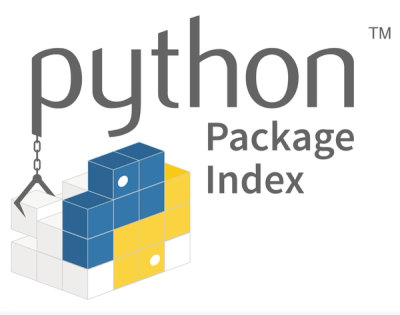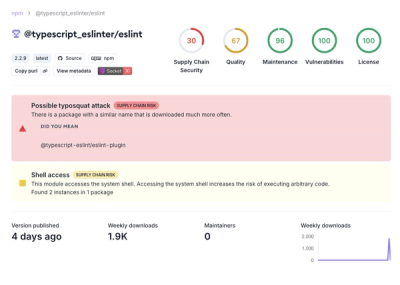jest-enzyme


Quick Links
Setup
The best setup is to use our jest environment jest-environment-enzyme.
If you prefer not to use the environment, you can also do this:
"jest": {
"setupFilesAfterEnv": ['./node_modules/jest-enzyme/lib/index.js'],
}
Assertions
- Not all assertions work with every rendering strategy.
If you are wondering what rendering mechanism to use when, refer to
enzyme's documentation.
toBeChecked()
| render | mount | shallow |
|---|
| no | yes | yes |
Ways to use this API:
expect().toBeChecked();
Assert that the given wrapper is checked:
import React from 'react'
import {mount, shallow} from 'enzyme'
function Fixture() {
return (
<div>
<input id="checked" defaultChecked />
<input id="not" defaultChecked={false} />
<input id="tertiary" defaultChecked checked={false} />
</div>
);
}
const wrapper = mount(<Fixture />);
expect(wrapper.find('#checked')).toBeChecked();
expect(wrapper.find('#not')).not.toBeChecked();
toBeDisabled()
| render | mount | shallow |
|---|
| no | yes | yes |
Ways to use this API:
expect().toBeDisabled();
Assert that the given wrapper is disabled:
import React from 'react'
import {mount, shallow} from 'enzyme'
function Fixture() {
return (
<div>
<input id="disabled" disabled />
<input id="not"/>
</div>
);
}
const wrapper = mount(<Fixture />);
expect(wrapper.find('#disabled')).toBeDisabled();
expect(wrapper.find('#not')).not.toBeDisabled();
toBeEmptyRender()
| render | mount | shallow |
|---|
| no | yes | yes |
Ways to use this API:
expect().toBeEmptyRender();
Assert that the given wrapper has an empty render (null or false):
function EmptyRenderFixture() {
return null;
}
function NonEmptyRenderFixture() {
return (
<div>
<EmptyRenderFixture />
</div>
);
}
const wrapper = mount(<EmptyRenderFixture />);
expect(wrapper.find('EmptyRenderFixture')).toBeEmptyRender();
expect(wrapper).not.toBeEmptyRender();
toExist()
| render | mount | shallow |
|---|
| no | yes | yes |
Ways to use this API:
expect().toExist();
Assert that the given enzyme wrapper has rendered content.
function Fixture() {
return (
<div>
<span className="foo" />
<span className="bar baz" />
</div>
);
}
const wrapper = mount(<Fixture />);
expect(wrapper.find('span')).toExist();
expect(wrapper.find('ul')).not.toExist();
toContainMatchingElement()
| render | mount | shallow |
|---|
| no | yes | yes |
Ways to use this API:
expect().toContainMatchingElement('.foo');
Assert that the given wrapper contains at least one match for the given selector:
function User(props) {
return (
<span className={props.className}>
User {props.index}
</span>
);
}
User.propTypes = {
index: PropTypes.number.isRequired,
className: PropTypes.string,
};
function Fixture() {
return (
<div>
<ul>
<li>
<User index={1} className="userOne" />
</li>
<li>
<User index={2} className="userTwo" />
</li>
</ul>
</div>
);
}
const wrapper = mount(<Fixture />);
expect(wrapper).toContainMatchingElement('.userOne');
expect(wrapper).not.toContainMatchingElement('.userThree');
toContainMatchingElements()
| render | mount | shallow |
|---|
| no | yes | yes |
Ways to use this API:
expect().toContainMatchingElements(2, '.foo');
Assert that the given wrapper contains a given number of matches for the given selector:
function User(props) {
return (
<span className={props.className}>
User {props.index}
</span>
);
}
User.propTypes = {
index: PropTypes.number.isRequired,
className: PropTypes.string,
};
function Fixture() {
return (
<div>
<ul>
<li>
<User index={1} className="userOne" />
</li>
<li>
<User index={2} className="userTwo" />
</li>
</ul>
</div>
);
}
const wrapper = mount(<Fixture />);
expect(wrapper).toContainMatchingElements(2, 'User');
expect(wrapper).not.toContainMatchingElements(2, '.userTwo');
toContainExactlyOneMatchingElement()
| render | mount | shallow |
|---|
| no | yes | yes |
Ways to use this API:
expect().toContainExactlyOneMatchingElement('.foo');
Assert that the given wrapper contains exactly one match for the given selector:
function User(props) {
return (
<span className={props.className}>
User {props.index}
</span>
);
}
User.propTypes = {
index: PropTypes.number.isRequired,
className: PropTypes.string,
};
function Fixture() {
return (
<div>
<ul>
<li>
<User index={1} className="userOne" />
</li>
<li>
<User index={2} className="userTwo" />
</li>
</ul>
</div>
);
}
const wrapper = mount(<Fixture />);
expect(wrapper).toContainExactlyOneMatchingElement('.userOne');
expect(wrapper).not.toContainExactlyOneMatchingElement('User');
toContainReact()
| render | mount | shallow |
|---|
| no | yes | yes |
Ways to use this API:
expect().toContainReact(<div>foo</div>);
Assert that the given wrapper contains the provided react instance:
class User extends React.Component {
render () {
return (
<span>User {this.props.index}</span>
)
}
}
User.propTypes = {
index: PropTypes.number.isRequired
}
class Fixture extends React.Component {
render () {
return (
<div>
<ul>
<li><User index={1} /></li>
<li><User index={2} /></li>
</ul>
</div>
)
}
}
const wrapper = mount(<Fixture />);
expect(wrapper).toContainReact(<User index={1} />);
expect(wrapper).not.toContainReact(<User index={9000} />);
toHaveClassName()
| render | mount | shallow |
|---|
| no | yes | yes |
Ways to use this API:
expect().toHaveClassName('foo');
Assert that the given wrapper has the provided className:
function Fixture() {
return (
<div>
<span className="foo" />
<span className="bar baz" />
</div>
);
}
const wrapper = mount(<Fixture />);
expect(wrapper.find('.foo')).toHaveClassName('foo');
expect(wrapper.find('.foo')).not.toHaveClassName('baz');
expect(wrapper.find('.bar')).toHaveClassName('bar baz');
expect(wrapper.find('.bar')).toHaveClassName('baz');
toHaveDisplayName()
| render | mount | shallow |
|---|
| no | yes | yes |
Ways to use this API:
expect().toHaveDisplayName('div');
Assert that the wrapper is of a certain tag type:
function Fixture() {
return (
<div>
<span id="span" />
</div>
);
}
const wrapper = mount(<Fixture />);
expect(wrapper.find('#span')).toHaveDisplayName('span');
expect(wrapper.find('#span')).not.toHaveDisplayName('div');
toHaveHTML()
| render | mount | shallow |
|---|
| no | yes | yes |
Ways to use this API:
expect().toHaveHTML('<div>html</div>');
Assert that the given wrapper has the provided html:
Note Quotations are normalized.
function Fixture() {
return (
<div id="root">
<span id="child">Test</span>
</div>
);
}
const wrapper = mount(<Fixture />);
expect(wrapper.find('#child')).toHaveHTML(
'<span id="child">Test</span>'
);
toHaveProp()
| render | mount | shallow |
|---|
| no | yes | yes |
Ways to use this API:
expect().toHaveProp('foo', 'value');
expect().toHaveProp('foo');
expect().toHaveProp({foo: 'value'});
Assert that the given wrapper has the provided propKey and associated value if specified:
function User() { ... }
User.propTypes = {
foo: PropTypes.string,
bar: PropTypes.array,
};
function Fixture() {
return (
<div id="root">
<User foo={'baz'} bar={[1,2,3]} />
</div>
);
}
const wrapper = mount(<Fixture />);
expect(wrapper.find(User)).toHaveProp('foo');
expect(wrapper.find(User)).toHaveProp('foo', 'baz');
expect(wrapper.find(User)).toHaveProp('bar');
expect(wrapper.find(User)).toHaveProp('bar', [1,2,3]);
expect(wrapper.find(User)).toHaveProp({
bar: [1, 2, 3],
foo: 'baz',
});
toHaveRef()
| render | mount | shallow |
|---|
| no | yes | yes |
Ways to use this API:
expect().toHaveRef('foo');
Assert that the mounted wrapper has the provided ref:
class Fixture extends React.Component {
render() {
return (
<div>
<span ref="child" />
</div>
);
}
}
const wrapper = mount(<Fixture />);
expect(wrapper).toHaveRef('child');
expect(wrapper).not.toHaveRef('foo');
toHaveState()
| render | mount | shallow |
|---|
| no | yes | yes |
Ways to use this API:
expect().toHaveState('foo');
expect().toHaveState('foo', 'bar');
expect().toHaveState({ foo: 'bar' });
Assert that the component has the provided stateKey and optional value if specified:
class Fixture extends React.Component {
constructor() {
super();
this.state = {
foo: false,
};
}
render() {
return (
<div />
);
}
}
const wrapper = mount(<Fixture />);
expect(wrapper).toHaveState('foo');
expect(wrapper).toHaveState('foo', false);
expect(wrapper).toHaveState({ foo: false });
toHaveStyle()
| render | mount | shallow |
|---|
| no | yes | yes |
Ways to use this API:
expect().toHaveStyle('height');
expect().toHaveStyle('height', '100%');
expect().toHaveStyle({ height: '100%' });
Assert that the component has style of the provided key and value:
function Fixture() {
const style1 = { height: '100%' };
const style2 = { flex: 8 };
return (
<div>
<span id="style1" style={style1} />
<span id="style2" style={style2} />
</div>
);
}
const wrapper = mount(<Fixture />);
expect(wrapper.find('#style1')).toHaveStyle('height', '100%');
expect(wrapper.find('#style2')).toHaveStyle('flex', 8);
toHaveTagName()
Deprecated: Matcher toHaveTagName is deprecated. Use the replacement, toHaveDisplayName() instead.
toHaveText()
| render | mount | shallow |
|---|
| no | yes | yes |
Ways to use this API:
expect().toHaveText('bar');
Assert that the wrapper's text matches the provided text exactly, using a strict comparison (===).
function Fixture() {
return (
<div>
<p id="full">Text</p>
<p id="empty"></p>
</div>
);
}
const wrapper = mount(<Fixture />);
expect(wrapper.find('#full')).toHaveText('Text');
expect(wrapper.find('#full')).not.toHaveText('Wrong');
expect(wrapper.find('#full')).toHaveText();
expect(wrapper.find('#empty')).not.toHaveText();
toIncludeText()
| render | mount | shallow |
|---|
| no | yes | yes |
Ways to use this API:
expect().toIncludeText('bar');
Assert that the wrapper includes the provided text:
function Fixture() {
return (
<div>
<p id="full">Some important text</p>
</div>
);
}
const wrapper = mount(<Fixture />);
expect(wrapper.find('#full')).toIncludeText('important');
expect(wrapper.find('#full')).not.toIncludeText('Wrong');
toHaveValue()
| render | mount | shallow |
|---|
| no | yes | yes |
Ways to use this API:
expect().toHaveValue('bar');
Assert that the given wrapper has the provided value:
function Fixture() {
return (
<div>
<input defaultValue="test" />
<input defaultValue="foo" value="bar" onChange={jest.genMockFunction()} />
</div>
);
}
const wrapper = mount(<Fixture />);
expect(wrapper.find('input').at(0)).toHaveValue('test');
expect(wrapper.find('input').at(1)).toHaveValue('bar');
toMatchElement()
| render | mount | shallow |
|---|
| no | yes | yes |
Ways to use this API:
expect().toMatchElement(<Foo />);
expect().toMatchElement(<Foo />, { ignoreProps: false });
expect().toMatchElement(<Foo />, { ignoreProps: false, verbose: false });
Assert the wrapper matches the provided react instance. This is a matcher form of Enzyme's wrapper.matchesElement(), which returns a bool with no indication of what caused a failed match. This matcher includes the actual and expected debug trees as contextual information when it fails. Like matchesElement(), props are ignored. If you want to compare prop values as well, pass { ignoreProps: false } as options. Uses enzyme's debug() under the hood and compares debug strings, which makes for a human readable diff when expects fail.
Example:
function Fixture() {
return (
<div>
<span id="foo" className="bar" />
</div>
);
}
const wrapper = shallow(<Fixture />);
expect(wrapper).toMatchElement(<Fixture />);
expect(wrapper.find('span')).toMatchElement(<span />);
expect(wrapper.find('span')).toMatchElement(
<span id="foo" className="bar" />,
{ ignoreProps: false }
);
expect(wrapper).not.toMatchElement(<div />);
toMatchSelector()
| render | mount | shallow |
|---|
| no | yes | yes |
Ways to use this API:
expect().toMatchSelector('.foo');
Assert that the wrapper matches the provided selector:
function Fixture() {
return (
<div>
<span id="foo" className="bar" />
</div>
);
}
const wrapper = mount(<Fixture />);
expect(wrapper.find('span')).toMatchSelector('span');
expect(wrapper.find('span')).toMatchSelector('#foo');
expect(wrapper.find('span')).toMatchSelector('.bar');
Jest Enzyme Environment
There is a special environment to simplify using enzyme with jest. Check it out here
If you are using Create React App, instead of adding to your package.json as above, you will need to add a src/setupTests.js file to your app, to import jest-enzyme:
import 'jest-enzyme';
This is documented on Create React App at the bottom of the Testing Components section. There is also more information about Initializing Test Environment.
Usage with TypeScript
As with Create React App, when using jest-enzyme with TypeScript and ts-jest, you'll need to add a setupTests.ts file to your app that explicitly imports jest-enzyme, and point the setupFilesAfterEnv field in your package.json file towards it:
import 'jest-enzyme';
"jest": {
"setupFilesAfterEnv": ["./src/setupTests.ts"],
},
This ensures that the type definitions bundled with jest-enzyme (which add extra Jest matchers and globals like shallow and mount) are included in your TypeScript project.





